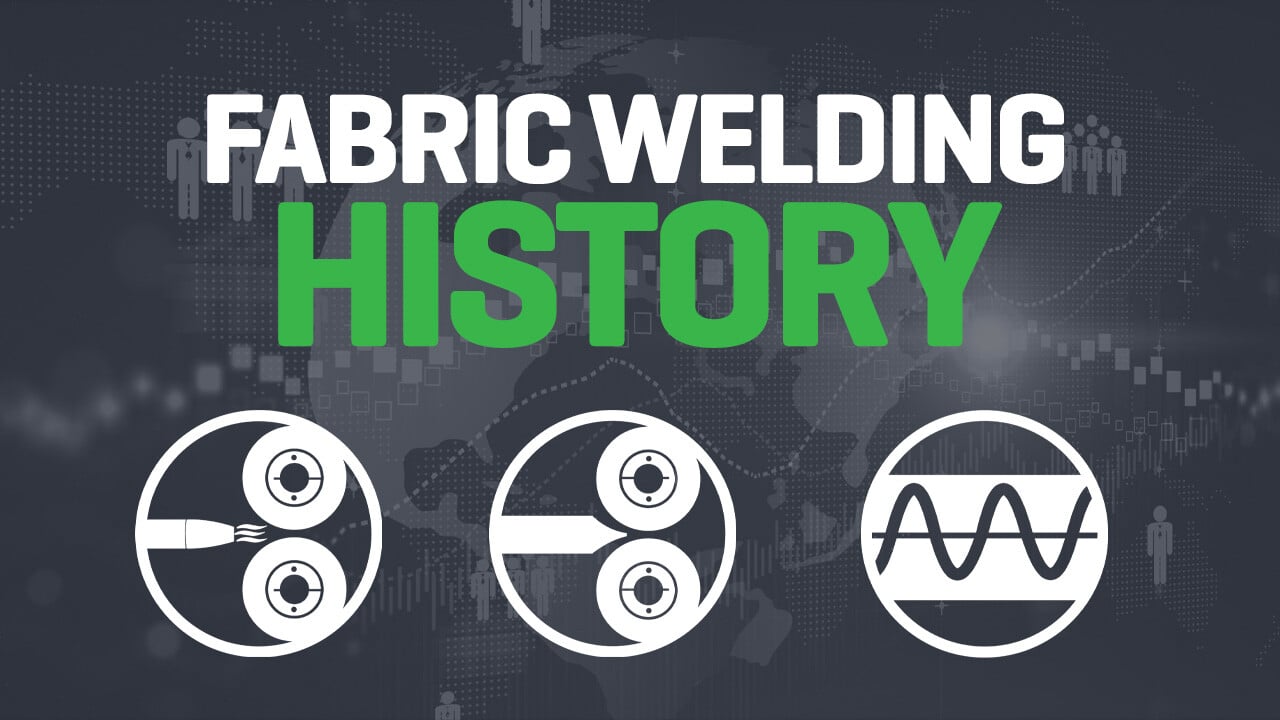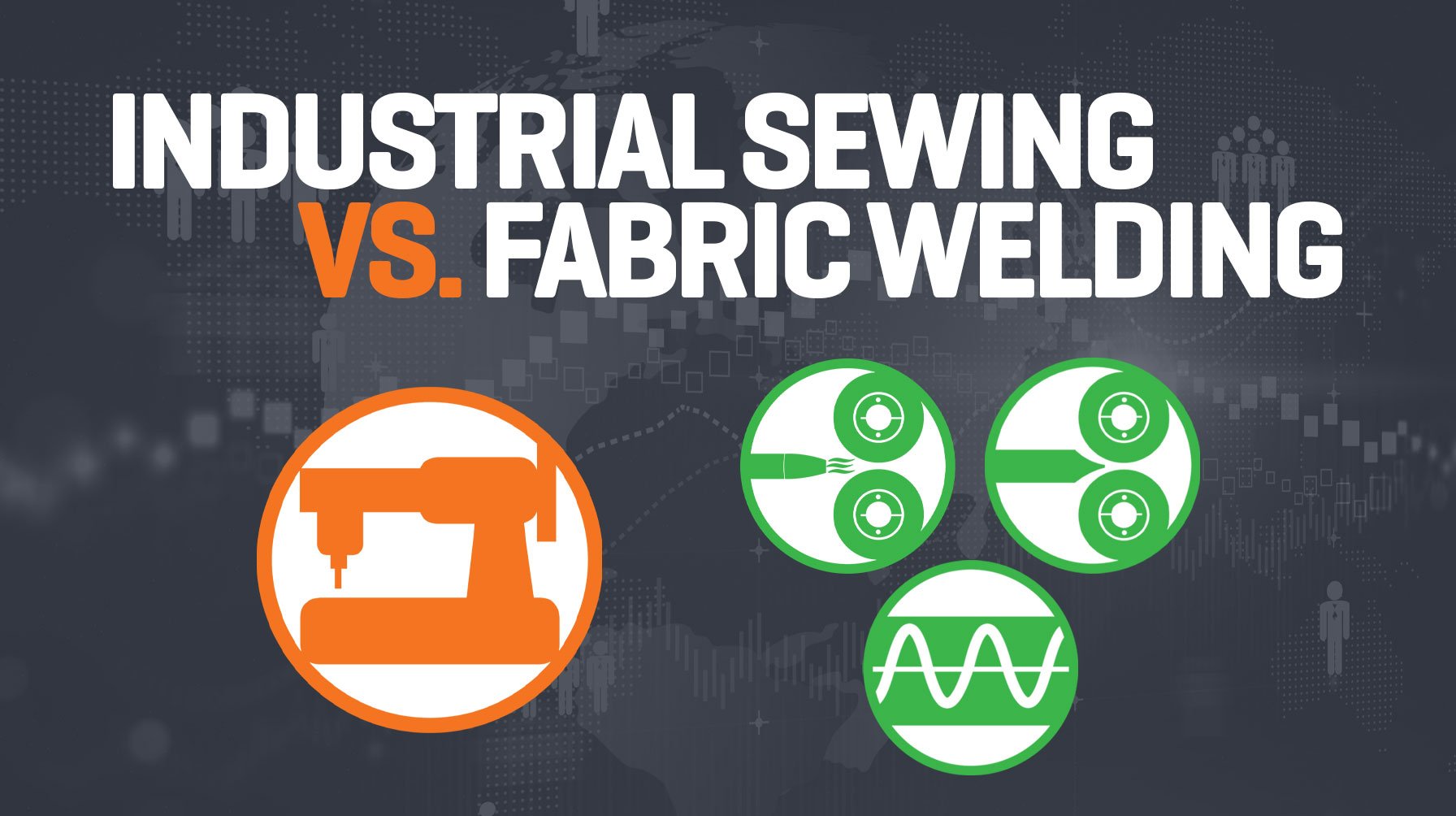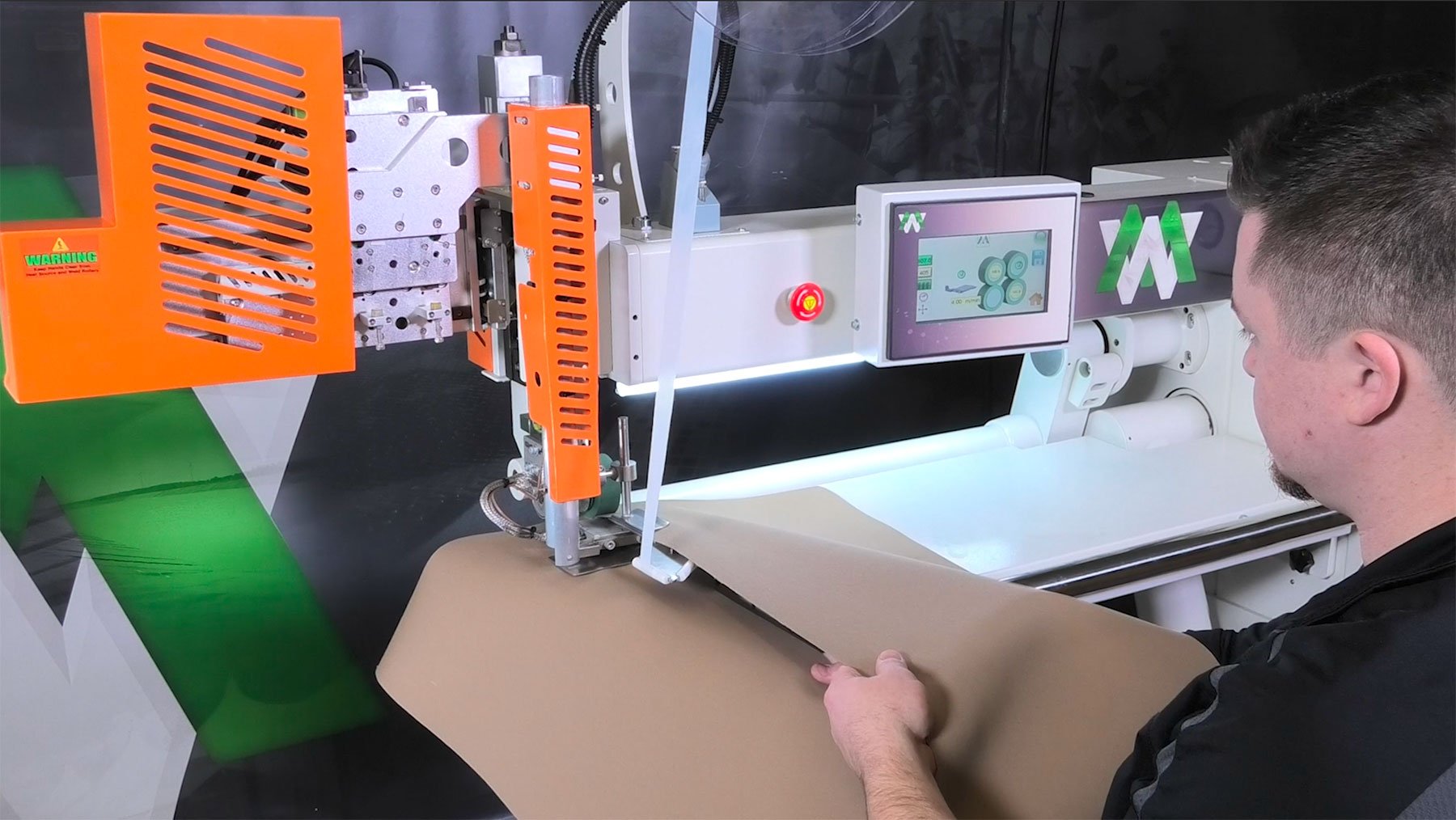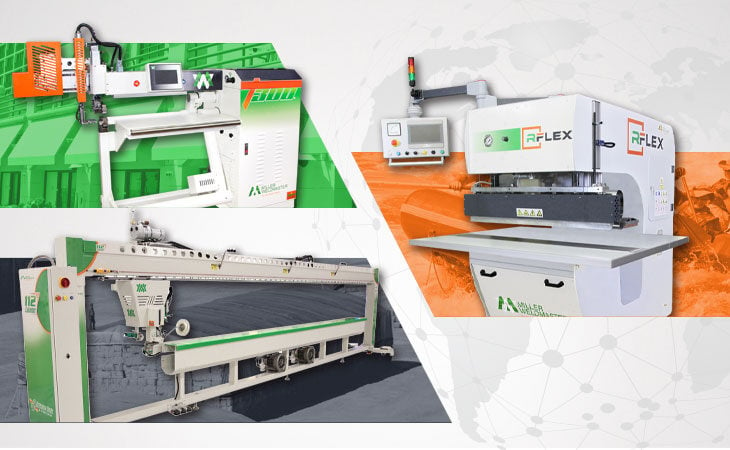Fabric welding, as a transformative technology, has seen an incredible journey from primitive methods to the forefront of high-tech industrial processes. This evolution mirrors the changing needs and innovations across various industries, adapting to new materials, demands, and technological advancements. This blog explores the rich history of fabric welding, charting its course from manual techniques to today’s automated, precision-driven applications. By delving into the past, we can appreciate the sophisticated processes and anticipate future developments in this crucial field. Modern welding methods, such as shielded metal arc welding, gas metal arc welding, and laser beam welding, have emerged to meet industrial needs and drive innovation. To see how these advancements are applied in modern machines, check out Miller Weldmaster’s machine overview page to learn more about everything we have to offer, from versatile fabric welders to the latest in automation and smart technology.
The Origins of Fabric Welding: From Hand-Stitched to Heat-Sealed
Early Methods of Fabric Joining Before Welding Technology
Long before the advent of modern welding technology, industries relied on basic methods to join pieces of fabric. One such historical method was forge welding, used extensively in metallurgy during the Middle Ages and early modern period. These methods, though fundamental, were often inadequate for industrial needs, where stronger and more resilient seams were crucial. Challenges such as durability, flexibility, and water resistance were significant, as these traditional methods often fell short in meeting the rigorous standards required in industrial applications.
The Birth of Fabric Welding: When Heat Became a Game-Changer
The transition to heat-sealing technologies marked a significant turning point in fabric joining. Early thermal bonding methods, including gas welding, laid the groundwork for the welding techniques we see today. The initial adoption of these methods by industries like tent and aerospace was revolutionary, driven by the need for stronger, more durable bonds and the ability to handle new synthetic materials.
Key Milestones in Fabric Welding History That Shaped the Industry
The Rise of Hot Air and Hot Wedge Welding
Hot air and hot wedge welding were among the first technologies to modernize fabric welding. Flux cored arc welding, introduced in 1957, also significantly increased welding speeds and became a notable development in modern welding techniques. These methods became standards in the industry due to their robustness and efficiency, providing waterproof, durable seams. They have had a profound impact on industries that require high-quality seals, such as tent and tarp manufacturing.
Radio Frequency (RF) Welding: The Next Big Leap
RF welding introduced a refined approach to fabric welding, differing from traditional heat-based methods by using electromagnetic energy to create a bond. Developed in the 1950s, electron beam welding uses a focused beam of electrons to create heat in a vacuum environment, offering high energy density, deep weld penetration, and speed, making it a prominent choice for high production applications. This technique found particular value in industries requiring high precision and consistency, such as in medical and automotive sectors, enhancing product reliability and quality. Laser beam welding, utilizing high-energy beams for joining materials, is also noted for its fast operation and deep weld penetration, particularly in high production applications.
Automation and Digital Advancements in Fabric Welding Machines
With the introduction of CNC controls and digital precision, fabric welding saw another leap forward. Automatic welding, invented by P.O. Nobel in 1920, revolutionized welding by enabling continuous wire electrode feeding, which was a significant advancement from previous techniques. Automation revolutionized the welding process, making it faster, more reliable, and more cost-efficient. The integration of software and intelligent technology further pushed the capabilities of welding machines, aligning them with modern manufacturing needs.
How Modern Welding Techniques and Fabric Welding Machines Are Revolutionizing Industries
Fabric Welding in Industrial and Commercial Applications
Today, fabric welding is integral in manufacturing processes, from creating tents and tarps to producing inflatables and protective coverings. The introduction of gas metal arc welding (GMAW) significantly improved welding efficiency and versatility, particularly for various materials. The specialized techniques developed for modern machines ensure that products meet high standards of strength, durability, and resistance to environmental factors. Gas tungsten arc welding (GTAW), perfected in 1941 by Russell Meredith, played a crucial role in aircraft construction, enhancing welding techniques for nonferrous metals.
The Role of Fabric Welding in Sustainable Manufacturing
The shift towards sustainability is becoming increasingly important in fabric welding. Modern welding techniques play a crucial role in enhancing safety and sustainability in welding practices. Modern methods and materials aim to reduce waste and energy consumption, aligning with global moves towards more environmentally friendly manufacturing practices.
The Future of Fabric Welding: What's Next?
The Move Toward More Sustainable Welding Solutions
As the industry evolves, there is a growing emphasis on developing more sustainable welding practices. Innovations in energy efficiency and the use of biodegradable and recyclable materials are guiding the future of fabric welding, focusing on reducing the environmental impact.
How Miller Weldmaster Supports the Evolution of Fabric Welding
Miller Weldmaster has been a pivotal player in the evolution of fabric welding, driving innovation and offering solutions that meet the diverse needs of modern industries. From custom machines designed for specific applications to advancements in automation and precision, Miller Weldmaster continues to be at the forefront of the fabric welding industry, pushing boundaries and setting standards.
This comprehensive exploration into the history of fabric welding showcases the dynamic changes and technological advancements that have shaped this essential industry. From its rudimentary beginnings to the sophisticated processes used today, fabric welding continues to be a vital part of industrial manufacturing, pushing the boundaries of innovation and efficiency.
Frequently Asked Questions About Fabric Welding History
What is the oldest method of fabric welding?
The oldest method of fabric welding is not welding in the modern sense but rather methods like sewing or stitching. Manual metal arc welding (MMAW) holds historical significance in welding technology as one of the earliest and most versatile arc welding methods. True fabric welding, involving the use of heat to fuse materials, began with basic heat sealing techniques. These early methods used heated tools to press and seal fabrics together, setting the stage for more advanced welding technologies.
How did fabric welding become popular in industrial applications?
Fabric welding became popular in industrial applications due to its efficiency and the strength of the bonds it created. Similarly, MIG welding evolved as a commonly used welding technique due to its efficiency and ease of learning. As industries such as automotive and aerospace developed, there was a growing need for methods that could reliably join synthetic materials like vinyls and thermoplastics. The advent of hot air, hot wedge, and RF welding provided these industries with durable, weather-resistant seams, significantly reducing production times and improving product durability.
What industries benefit the most from fabric welding today?
Today, several industries benefit significantly from fabric welding, including:
- Automotive: For upholstery, airbags, and other components.
- Aerospace: For lightweight and durable fabric joints in aircraft components.
- Textiles: For outdoor gear, such as tents, tarps, and awnings.
- Medical: For sterile medical bags and clothing.
- Industrial: For protective coverings and inflatable products.
These industries rely on fabric welding for its ability to create strong, durable, and waterproof seams that meet stringent safety and quality standards.
How has automation changed fabric welding processes?
Automation has revolutionized fabric welding processes by increasing precision, consistency, and efficiency. Automated fabric welding machines equipped with CNC controls and digital programming allow for precise control over welding parameters, leading to higher quality seams and reduced material waste. Automation also enables high-volume production without sacrificing quality, essential for meeting the demands of large-scale industrial applications.
What’s the difference between hot air welding and RF welding?
Hot air welding and RF welding are both used to join thermoplastic materials, but they use different mechanisms:
- Hot Air Welding: This method uses a jet of hot air to melt the material along the seam. It is versatile, effective for both thin and thick materials, and commonly used in the manufacture of tents, tarps, and other industrial fabrics.
- RF Welding: Radio Frequency (RF) welding uses electromagnetic energy to heat and fuse materials. It is particularly useful for materials that are susceptible to thickness and requires precise control, often used in medical and automotive applications. RF welding is known for its ability to produce very clean, strong seams.
How does Miller Weldmaster contribute to fabric welding innovation?
Miller Weldmaster contributes to fabric welding innovation by continuously developing new technologies and improving existing machines. They focus on creating versatile, efficient, and reliable welding solutions tailored to the needs of various industries. Their machines are designed for a wide range of applications, from small custom projects to large-scale industrial production. Additionally, Miller Weldmaster actively participates in research and development, pushing the boundaries of what's possible in fabric welding technology and leading initiatives to make welding processes more sustainable and efficient.





